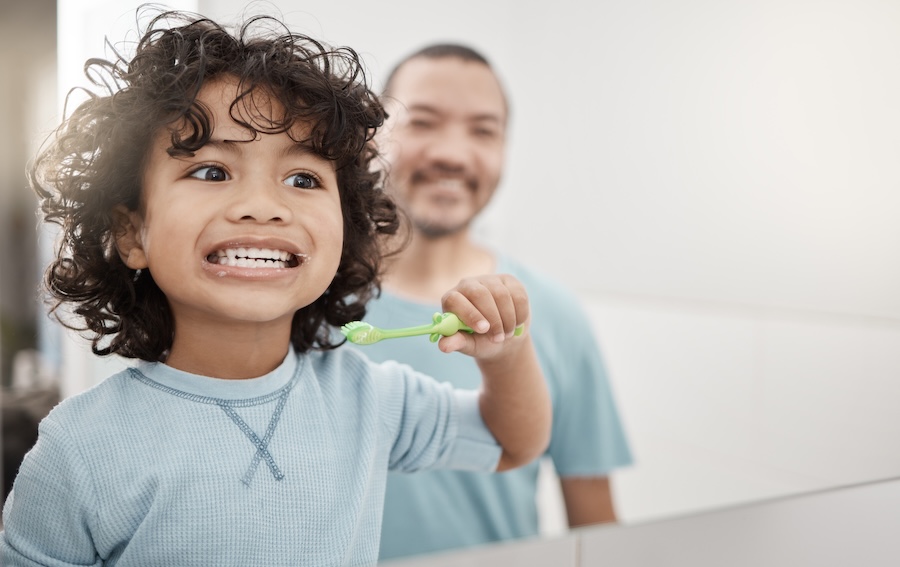
Choosing the Right Toothbrush for Sensory-Sensitive Kids
September 18, 2025 9:00 amFor many kids, brushing is a simple part of their daily routine. But for children with sensory sensitivities, even the feel of a toothbrush can be overwhelming. The wrong texture, size, or sound may make oral hygiene stressful—for both kids and parents. At Dallas Center for Oral Health & Wellness, Dr. Anna Willison, Dr. Eugene Dahl, and Dr. Azita Carr understand these challenges and help families find toothbrushes that make brushing more comfortable.
Start with Bristle Texture
Soft bristles are generally best for children, especially those who are sensory-sensitive. Extra-soft options can feel gentler and less “scratchy,” which makes brushing easier to tolerate. Some families find success with silicone-bristle toothbrushes, which have a smoother feel and less resistance than traditional nylon bristles.
Consider Brush Size and Shape
A smaller brush head is often more comfortable for kids with sensitivities. It reduces the sensation of “bulk” in the mouth and gives parents more control when helping. Handles also come in different shapes and grips—sometimes a thicker handle feels steadier and easier for kids to hold.
Manual vs. Electric Toothbrushes
Electric toothbrushes can be helpful, but the vibration and noise may be too much for sensory-sensitive kids. For some children, though, the consistent motion actually feels easier and less effortful than manual brushing. If you’re not sure, try letting your child hold the toothbrush while it’s off and gradually introduce the vibration so they can explore it at their own pace.
Try Triple-Sided Toothbrushes
For kids who can only manage a few seconds of brushing, a triple-sided toothbrush can be especially helpful. These brushes surround the tooth and clean the front, back, and chewing surface at the same time. That way, even short brushing sessions are more effective—and kids spend less time with a toothbrush in their mouth.
Other Helpful Options
- Color and design: Sometimes letting kids choose their own toothbrush—whether it’s their favorite color or character—gives them a sense of control and excitement.
- Lighting or timers: Some toothbrushes have lights or music to help guide brushing time in a fun, non-intrusive way.
- Desensitization tools: For children who struggle with the sensation of bristles, starting with oral sensory tools (like chewable tubes or silicone brushes) may help ease them into the habit.
Sensory Sensitive Pediatric Care at Dallas Center for Oral Health and Wellness
Finding the right toothbrush for a sensory-sensitive child may take a little trial and error, but it can make all the difference in daily routines. At Dallas Center for Oral Health & Wellness, Dr. Anna Willison, Dr. Eugene Dahl, and Dr. Azita Carr work closely with families to create strategies that make oral care more manageable—and less stressful—for kids. If you’d like guidance on toothbrushes, brushing techniques, special needs dentistry, or our holistic focus, call our Dallas office today to schedule an appointment.
Categorised in: Dental Tips, Pediatric Dentistry

